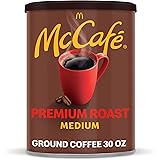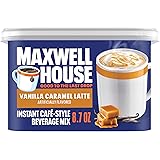Have you ever eagerly blended a batch of cold coffee, only to be met with a disappointing, thin, and watery concoction? It’s a common culinary frustration. Many aspiring home baristas face this challenge, struggling to replicate the luxurious, cafe-quality beverage. However, achieving that coveted thick and creamy texture isn’t an elusive secret; it’s a science, easily mastered with the right ingredients and precise techniques. The video above provides an excellent visual guide to craft an exceptional cold coffee, and below, we delve deeper into the methodologies and ingredient dynamics that make this recipe profoundly effective.
Mastering the Art of Thick and Creamy Cold Coffee at Home
Crafting a truly exceptional cold coffee, one that boasts a rich body and velvety mouthfeel, requires more than just mixing ingredients. It demands an understanding of dairy science, emulsification, and thermal dynamics. Unlike many rudimentary recipes, this approach ensures a consistently superior product, elevating your homemade beverages to a gourmet standard.
The Core Elements: Ingredients for Unrivaled Richness
Each component in this recipe is selected for a specific purpose, contributing to the final texture and flavor profile. Precision in ingredient choice and quantity is paramount for achieving optimal viscosity and a stable emulsion.
Dairy Dynamics: The Role of Milk and Cream
The foundation of any creamy beverage lies in its dairy content. The strategic use of both chilled milk and fresh cream is key to this recipe’s success, providing a high fat content essential for richness.
Chilled Milk (2 Cups): Using pre-chilled milk is not merely for temperature. The fat globules in cold milk are more stable and less prone to coalescing prematurely during blending. This stability is crucial for forming a robust emulsion, which is the dispersion of tiny fat particles throughout the liquid. Moreover, starting with a colder base helps maintain the drink’s low temperature without relying excessively on ice cubes, thereby mitigating dilution.
Fresh Cream (1/2 Cup, not Whipping Cream): This distinction is vital. Fresh cream typically possesses a fat content ranging from 25% to 30%, whereas whipping cream often exceeds 35%. The lower fat fresh cream, exemplified by brands like Amul, provides substantial body and richness without the risk of over-aeration or inadvertent churning into butter during the blending process. It significantly increases the viscosity and contributes to the decadent mouthfeel, distinguishing this cold coffee from thinner versions.
Sweetness and Structure: Sugar and Ice Cream
These ingredients contribute more than just flavor; they play a critical role in the cold coffee’s structural integrity and thermal properties.
Vanilla Ice Cream (6 Medium Scoops): Ice cream is a multi-functional powerhouse in this recipe. Beyond its inherent sweetness and vanilla flavor, it contributes a substantial amount of dairy fat, emulsifiers (like egg yolk or guar gum often found in ice cream), and pre-incorporated air. These elements collectively increase the drink’s body, provide a smooth texture, and help stabilize the emulsion. The ice cream also significantly lowers the overall temperature, contributing to the “cold” aspect without adding excessive liquid.
Sugar (3 Tablespoons): While primarily a sweetening agent, sugar also impacts the drink’s texture. It contributes to the overall solids content, marginally increasing viscosity. Additionally, sugar lowers the freezing point of the mixture, which can subtly influence the formation of ice crystals and the perceived smoothness of the final product.
The Coffee Component: Flavor Extraction and Blend
The method of preparing the coffee extract is critical for both flavor and texture.
Instant Coffee (3 Tablespoons) + Warm Water (1 Tablespoon): Dissolving instant coffee in a small amount of warm water prior to blending is a non-negotiable step. This ensures complete solubilization of the coffee granules, preventing a gritty texture and promoting a uniform coffee flavor dispersion throughout the beverage. Directly adding dry coffee powder to cold liquid can result in undissolved particles and an inconsistent taste profile. The concentrated coffee extract allows for potent flavor without adding significant volume.
Embellishments: Chocolate Syrup and Ice Cubes
These final additions round out the flavor and ensure optimal serving temperature.
Chocolate Syrup (3 Tablespoons): This adds a classic complementary flavor and an additional layer of sweetness. Its viscous nature also contributes slightly to the drink’s overall body, enhancing the decadent profile.
Ice Cubes (3 Cubes): Used judiciously, ice cubes provide an immediate temperature drop, ensuring the cold coffee is served perfectly chilled. However, the precise number is crucial. Using too many can lead to rapid melting and subsequent dilution, undermining the carefully crafted thickness. The pre-chilled milk and ice cream already provide a significant thermal buffer.
Precision Blending: Techniques for Optimal Emulsification
The sequence and duration of blending are as important as the ingredients themselves. This recipe employs a two-stage blending process to achieve maximum creaminess and froth.
The Blending Sequence: A Strategic Approach
The layering of ingredients and subsequent blending phases are designed to build a stable and luscious emulsion.
Initial Blend: Combine chilled milk, chocolate syrup, fresh cream, sugar, and the pre-dissolved coffee mix. Blend this mixture for a few seconds until the sugar is completely dissolved and a slight frothy head begins to form. This initial phase emulsifies the fat from the milk and cream with the sugar and coffee, creating a homogeneous and stable base. Dissolving sugar thoroughly at this stage prevents a grainy mouthfeel and ensures even sweetness distribution.
Secondary Blend: Incorporate the vanilla ice cream and ice cubes. Blend again for only a few seconds, just until the ice cream is fully integrated and the ice cubes are pulverized. The key here is to avoid over-blending. Excessive blending generates heat, which can melt the ice cream too quickly and potentially destabilize the emulsion. Over-blending can also lead to excessive aeration, creating a lighter, less dense texture, or even separating the fats due to shearing forces, akin to churning butter.
Achieving the Signature Froth and Thickness
The characteristic frothy head and substantial body are direct results of the precise blending technique and the high fat content. As the mixture briefly rests, the air bubbles incorporated during blending, stabilized by milk proteins and fats, rise to the top, forming a dense “froth mountain.” This phenomenon is due to the lower density of the air-rich foam compared to the liquid coffee below, creating that appealing stratified appearance unique to a well-made cold coffee.
Elevating the Experience: Presentation and Customization
Beyond the core recipe, presentation plays a significant role in the sensory experience. Small details can transform a delicious drink into a gourmet indulgence.
The Art of Garnishing: Visual Appeal and Taste
The video demonstrates elegant garnishing techniques that enhance both visual appeal and flavor. Lining the inside of the glass with chocolate syrup creates an attractive visual swirl and adds an extra burst of chocolate flavor with each sip. The choice between a “froth mountain” scooped directly from the blender and a topping of whipped cream offers textural contrast. The froth provides a lighter, airy coffee essence, while whipped cream offers a more decadent, dairy-rich layer. A final dusting of cocoa powder adds a sophisticated finish and an aromatic element.
Beyond the Recipe: Customization and Advanced Tips
Once you’ve mastered the foundational recipe, consider these advanced tips for further customization:
- Espresso Alternative: For an even more robust coffee flavor, substitute the instant coffee with 1-2 shots of freshly brewed espresso, adjusting the warm water quantity as needed.
- Flavor Variations: Experiment with different ice cream flavors beyond vanilla, such as coffee ice cream for an intensified coffee profile, or even a hint of hazelnut or caramel ice cream for a unique twist.
- Spice Infusion: A tiny pinch of cinnamon or cardamom blended with the coffee can add a subtle, aromatic complexity.
- Salt Enhancement: A minuscule pinch of sea salt can surprisingly enhance the sweetness and balance the overall flavor profile, much like in gourmet chocolate.
The Science Behind the Creaminess: Why This Recipe Works
The efficacy of this cold coffee recipe lies in its synergistic combination of high fat content, strategic chilling, and controlled blending. The generous amounts of fresh cream and vanilla ice cream significantly elevate the dairy fat percentage, which is crucial for achieving high viscosity and a rich, luxurious mouthfeel. The pre-chilled milk and limited ice cubes prevent excessive dilution, ensuring the concentrated flavor and body are maintained. Furthermore, the two-stage blending process, coupled with specific ingredient additions, promotes the formation of a stable emulsion, preventing ingredient separation and maximizing air incorporation for that desirable frothy top. This meticulous approach directly counters the common issue of watery cold coffee, consistently delivering a truly thick and creamy cold coffee experience.







